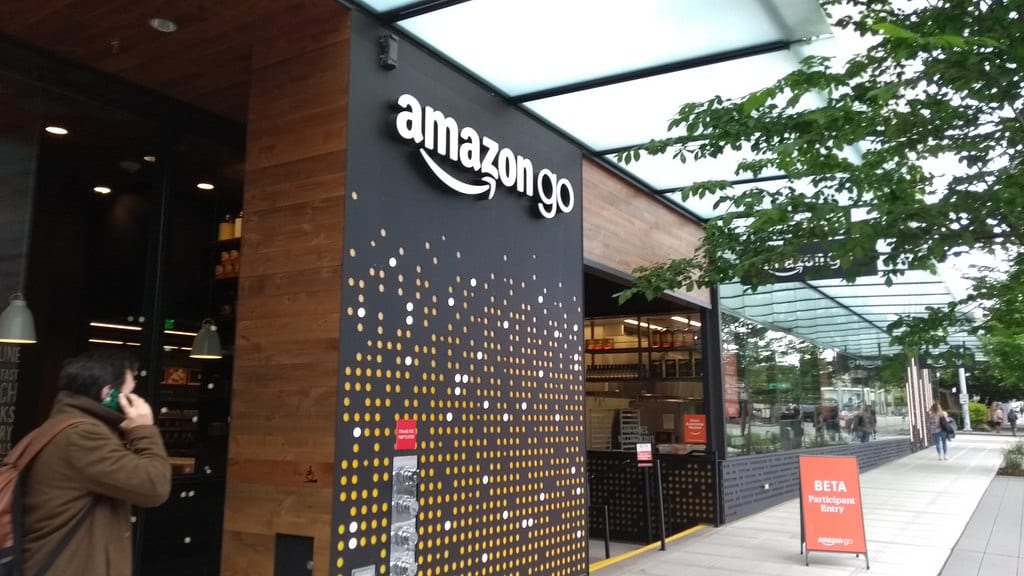Written by Lola’s Fruit Shrubs account team members Aly Brandt, Devyn Kehlenbeck, Lily Newman and Nina Yanez.
On Jan. 29 in Seattle, Amazon opened the doors to its first convenience outlet: a high-tech retail store called “Amazon Go.” The store’s slogan states: “No lines, no checkout – just grab and go!”
Amazon’s technology is so advanced, there is no need for cashiers or checkout stands. The technology recognizes every item in the store without needing to attach a special barcode to every banana or cup of yogurt. Payment is automatically deducted from a users account on the Amazon Go mobile app. Customers simply grab what they want, toss it in their bag and walk out.
The new advances of Amazon Go have been met with excitement, but have also raised concerns about customer privacy. Amazon Go operates through cameras and sensors located throughout the store which track customer movement and weight. Early patents suggest that the cameras will be able to identify a customer’s skin tone, which opens the possibility of categorizing customers into different gender and racial demographic columns within its database.
The first reviews of this service have been overwhelmingly positive. Yet, given the personal nature of this technology, Amazon’s public relations team must be proactive and ready to respond in the event of a complaint.
Listed below are a few privacy-related incidents in which companies PR teams responded to customer concerns:
Uber
In Nov. 2016, Uber added a feature to the application, which allowed user location data to be collected after the ride of each user had ended. This feature caused immediate concern, primarily amongst users who didn’t feel comfortable sharing their every move with the company. Uber initially released a statement saying that it used the data to “improve pickups, drop-offs, customer service and to enhance safety.” Uber later responded to the backlash by terminating its tracking of users after they completed their ride or giving users the option to share their location, but only while using the app.
Apple
On November 3, 2017, Apple released their iPhone X. This technology update primarily features facial recognition, allowing users to unlock their phones with the glimpse of the user’s face. This feature was met with excitement from tech aficionados, but also raised concerns amongst users regarding security. U.S. Senator Al Franken, wrote a letter to Apple asking them to provide more information regarding the feature. Apple responded swiftly to these concerns by explaining how face identification works and how that information is securely stored. Apple ended these concerns by responding quickly and thoroughly.
Amazon Echo
Amazon Echo is marketed as a digital assistant that can complete an array of tasks which include: playing music, interpreting books and requesting a pizza delivery. All of these features are voice activated, allowing the user to ask, “Alexa, what is the weather forecast for today?”, which will elicit a response. Critics of the device worry that users’ voices and conversations are recorded and stored, while others question the possibility of the device being hacked and personal information being stolen. Amazon responded to some of these concerns by assuring customers that the device is not constantly listening and that it is in passive mode until it hears “wake words.” Amazon Echo’s PR team directs concerned users to its FAQ page on its website where it offers solutions to questions that arise frequently.
In all of these cases, the companies assured customers that their concerns were being heard and that they were responding to these issues. Responding to privacy concerns in the tech age comes down to the principles of good PR: respond quickly and be transparent.
